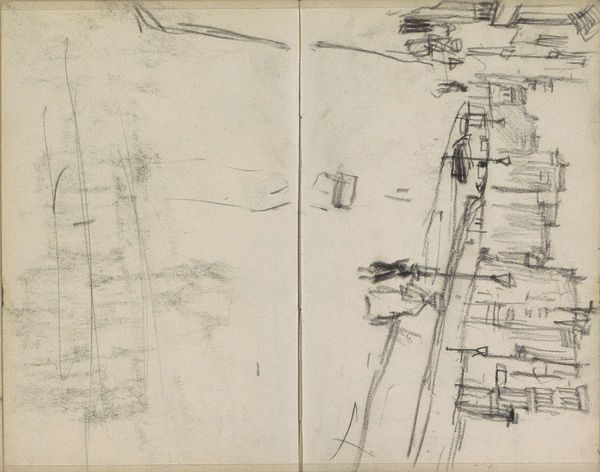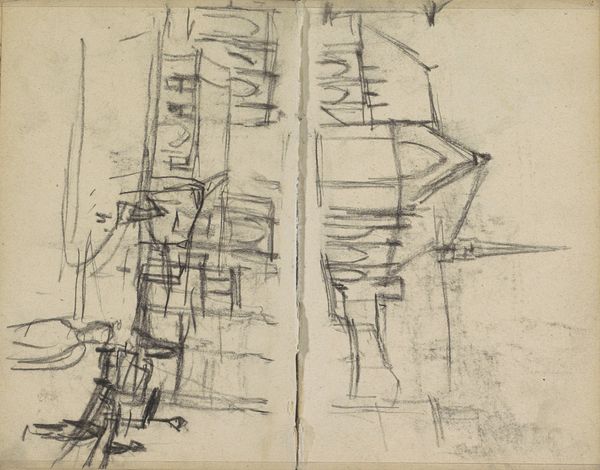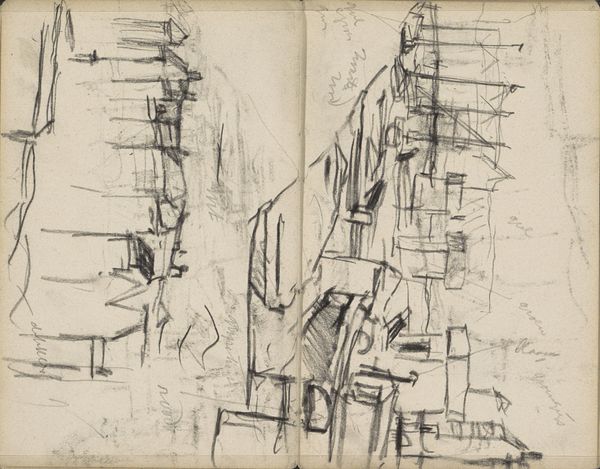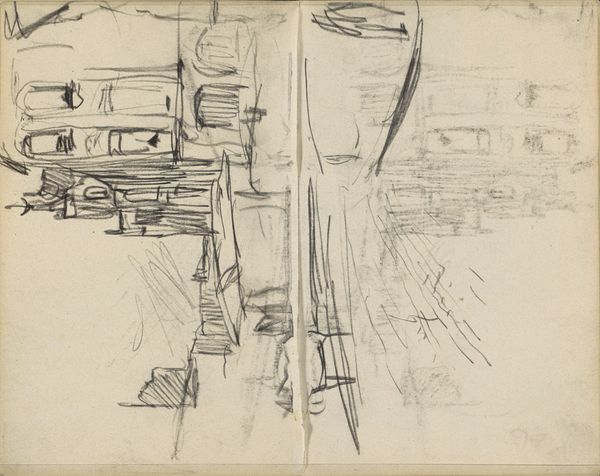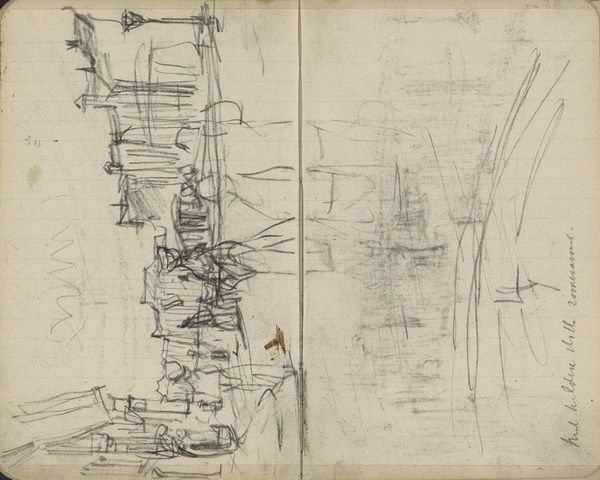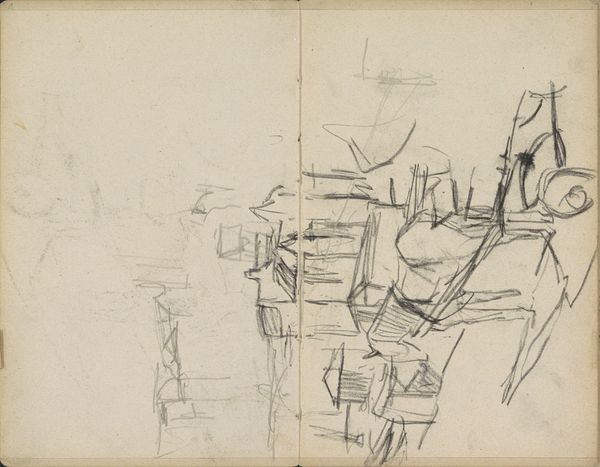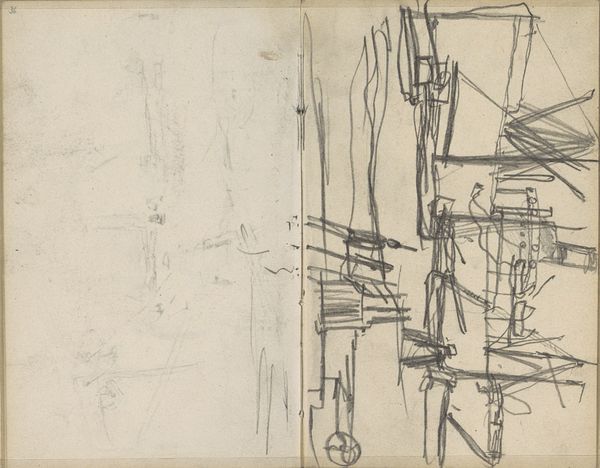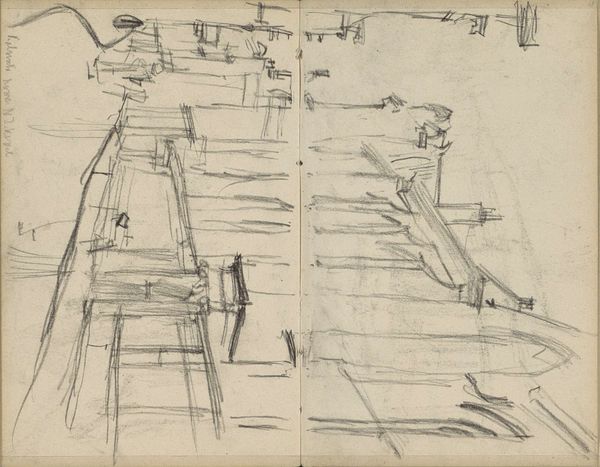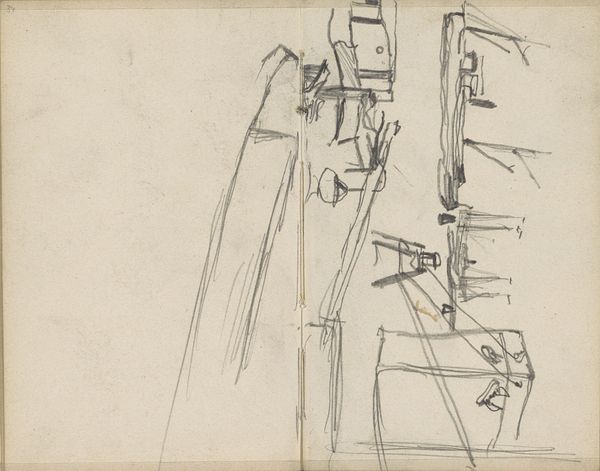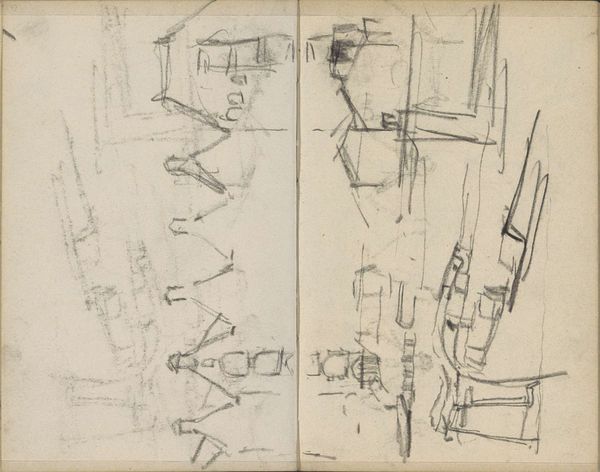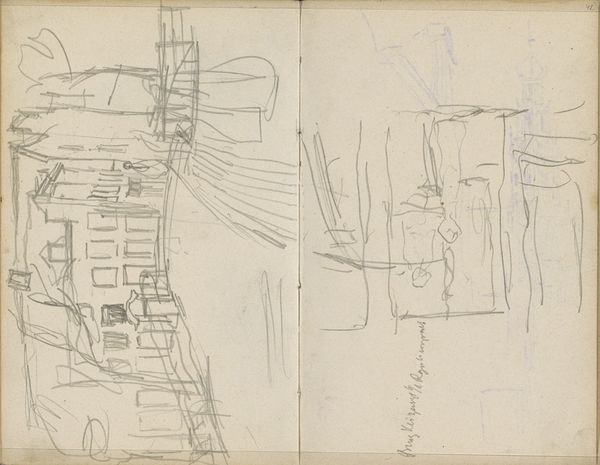
Copyright: Rijks Museum: Open Domain
Editor: This is "Two Views of Amsterdam," a pencil and pen sketch by George Hendrik Breitner, made sometime between 1906 and 1923. It feels… fragmented, almost like two memories overlapping. What do you see in it? Curator: It is fascinating how Breitner uses the sketch format—ordinarily associated with personal, preparatory studies—to record public spaces and cultural touchstones of Amsterdam. We aren’t simply looking at lines on paper. What symbols do these architectural renderings hold? Editor: You mean, like, how the images evoke certain feelings about the city? Curator: Exactly. Think about Amsterdam's identity in the early 20th century. The sketches capture the bustling activity, industry, the harbor. What kind of associations might that prompt in the viewer? And why does Breitner offer two "views" instead of one? Editor: Perhaps he's contrasting different aspects of city life? The rough lines give it a raw, almost uneasy quality, especially compared to idealized paintings of Amsterdam. I see… a less romanticized version of the city. Curator: Yes, consider this. What visual weight does the medium itself, the pen and pencil, carry in the viewer's perception of subject, the urban landscape of Amsterdam? This particular combination of architecture with an artistic technique feels… revealing. Editor: That's so interesting. It is like a visual shorthand, a deeply personal record imbued with the city’s essence. Thanks for sharing your perspective! Curator: My pleasure. Hopefully, the viewer may also become more sensitive to the hidden dialogues images engage with our own understanding of time, history and culture.
Comments
No comments
Be the first to comment and join the conversation on the ultimate creative platform.
